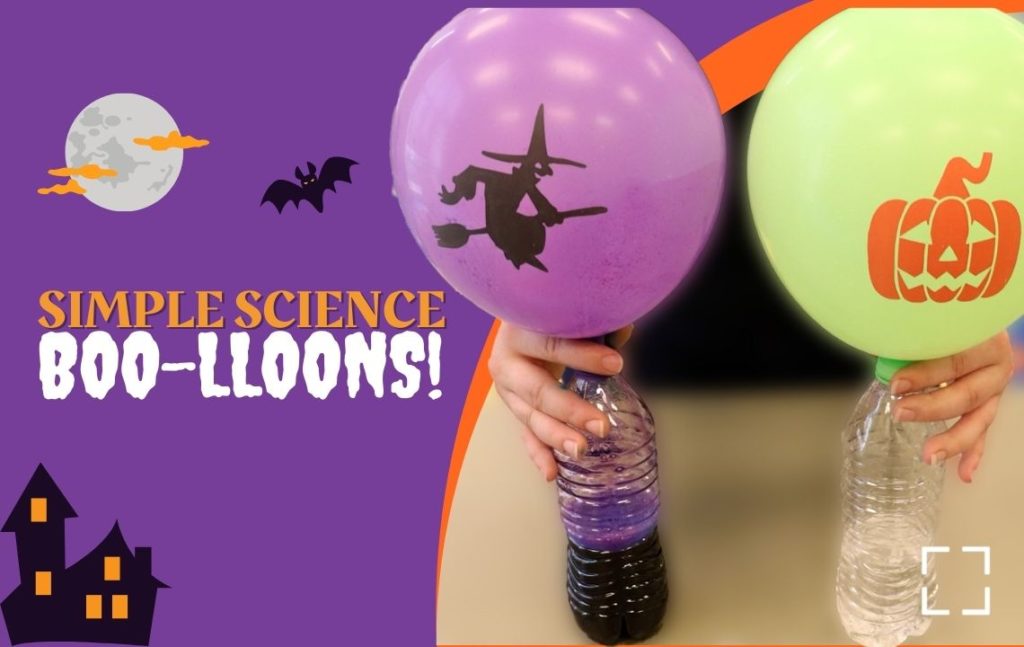Create a spooky chemistry experiment with this Simple Science project
October is the perfect time to explore a spooky chemistry experiment! The balloons in this experiment seem to blow up all on their own. Decorate your balloons with a ghost or jack-o-lantern face before starting to make this even more seasonal. Be sure to talk together about the science behind why this experiment works, and don’t be afraid to explore!

Supplies Needed
- Baking soda (2 tsp per experiment)
- Vinegar (1 cup per experiment)
- Empty water bottles
- Balloons
- Measuring utensils
- Funnel
- Food coloring (optional)
Instructions
- Blow up your balloon a little bit to stretch it out.
- Measure and pour 2 teaspoons of baking soda into the balloon using a funnel or a piece of paper rolled into a funnel shape.
- Measure and pour 1 cup of vinegar into your empty water bottle using a funnel, if possible.
- You are going to carefully attach the bottom of your balloon to the top of the water bottle. Hold your balloon at an angle while doing this so the baking soda does not spill in. Make sure you have a good seal.
- Make a prediction of what will happen when the baking soda and vinegar mix.
- Lift up your balloon to dump the baking soda into the bottle. Swirl the bottle a little to get the best reaction. Watch what happens to your balloon!
Questions to Ask
- Does the amount of baking soda you mix with the vinegar change the experiment? Try different measurements using supplies from your own kitchen. Does your balloon blow up more or less?
- Does adding something to the reaction change the outcome? Try adding a few drops of food coloring or dish soap next time. This is best observed in a dish or clear cup without the balloon.
- How do you know there has been a chemical reaction? List the things that changed during the reaction such as color and temperature or were produced such as bubbles and gas. All of these indicate that a chemical reaction has occurred.
How it Works
A chemical reaction is occurring inside of your water bottle between the baking soda (base) and the vinegar (acid). This acid-base reaction produces a salt (solid), water (liquid), and carbon dioxide (gas). It’s the carbon dioxide gas that is blowing up your balloon. As the gas is produced, it fills the water bottle. Once the bottle is full, it has nowhere else to go but up into the balloon. The carbon dioxide (CO2) gas that fills up your balloon is the same gas we exhale when we are breathing. It’s also the same gas plants use to produce energy.
Chemical Formula of Baking Soda and Vinegar
C2H4O2 + NaHCO3 → NaC2H3O2 + H2O + CO2
vinegar + sodium bicarbonate → sodium acetate + water + carbon dioxide

Audra D.
With 8 locations throughout Vanderburgh County, EVPL is ready to discover, explore, and connect WITH you! We encourage you to uncover new things, revisit old favorites, and to engage with us along the way.
200 SE Martin Luther King Jr. Blvd
Evansville, Indiana 47713
Administration: ceo@evpl.org
Card & Account: circulation@evpl.org
Feedback & Ideas: marketing@evpl.org



